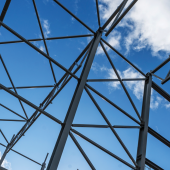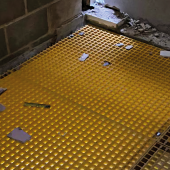The principles of infrastructure resilience
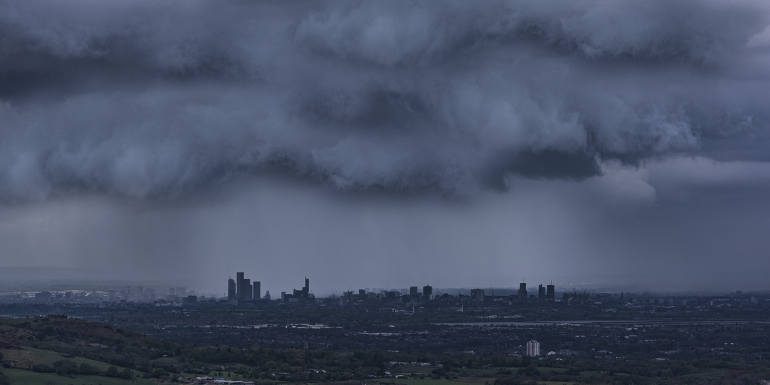
Liz Varga FCABE explains how the principles of infrastructure resilience relate to the built environment.
Critical infrastructure networks provide essential services to homes, businesses, industry and the government. These services provide buildings – whether residential, commercial, industrial or public – with clean water, energy for heating, power and lighting, telecommunications and modes of transport. When essential services are disrupted, buildings become unusable and often close until services are operational again.
Infrastructure is networked, sometimes delivering products such as energy and water over long distances. This means disruptions can be caused by problems happening a long way away and can affect entire towns and regions, sometimes for long periods; it’s easy to think of examples of this.
There is growing concern that disruptions are occurring more frequently and with greater severity: either more people and buildings are affected, or they are affected for longer periods. There are several reasons for this, including: ageing infrastructure, with some operating beyond its intended lifetime; an increase in natural hazards, arguably due to climate change, which our construction and building operations are exacerbating; greater intensity of demand, especially in urban areas, where populations are becoming ever denser; and supply chains that are becoming increasingly globalised, creating greater delay risks for products and parts required for infrastructure services.
Resilience abilities and strategies
So, how to develop better infrastructure resilience? It will involve finding ways to better predict disruptions, prevent them happening, keep them contained should they happen, and to recover in a timely and co-ordinated way. These are sometimes called resilience abilities.
Other strategies for resilience include: redundancy (having spare capacity); reliability (putting maintenance practices in place to avoid system or component failure); resistance (implementing barriers for protection, such as flood defences); responsiveness (taking timely action when disruptions occur); and monitoring to detect and predict potential failures.
However, no principles for resilient infrastructure exist that set out goals across economic, environmental and social domains. Economic measures have dominated investment and operations in both infrastructure and buildings. There has been much development on valuing social outcomes and on the sustainability and value of the environment, which has yet to be included into measuring the true value of infrastructure and buildings. Also, technologies such as artificial intelligence (AI) have not yet had an effect on helping infrastructure services to be uninterrupted.
Developing a cohesive set of infrastructure principles will help decision-making at a national and regional scale by providing a way to determine whether investment or operational changes will improve overall resilience. This introduces a new concept called net resilience gain: the idea that changes to infrastructure may make resilience better or worse. For instance, when a coal-fired power plant is decommissioned, it removes a supply channel from the electricity grid. This makes the grid less resilient unless the plant is replaced with something that is at least as reliable, otherwise it will have insufficient spare capacity to compensate for its loss. The measure of net resilience continuously changes; it is a dynamic phenomenon that reflects how assets age, hazards, skills and capacities change, and so on.
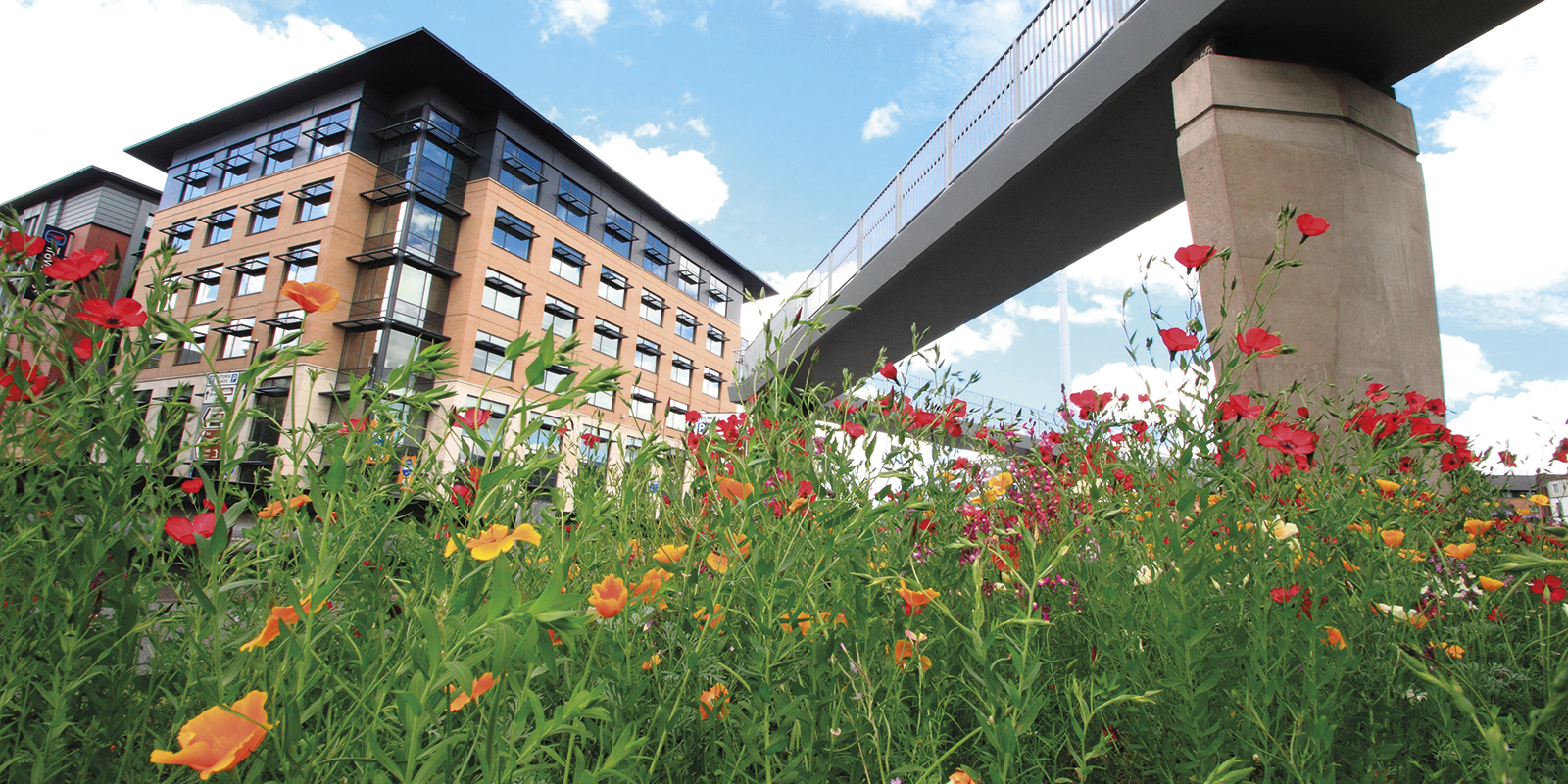
Infrastructure resilience
The United Nations Office for Disaster Risk Reduction (UNDRR) has sponsored the work on setting out the principles for resilient infrastructure. Through its engagement with member states, UNDRR has recognised that one of the key gaps in the infrastructure resilience arena is a shared view of: what infrastructure is in scope; the extent of resilience; the scale and ambition for resilience; the definition of resilience; and what can be done to improve infrastructure resilience. Working with UNDRR on setting out the principles for resilient infrastructure, the first step was to identify principles from academic articles and case studies. It found 14 draft principles, which have been the subject of consultation with key UK institutions. These principles are yet to be finalised and there will be a UNDRR global consultation held in March 2022.
In 2021, a series of workshops with industry experts focused on consolidating and improving on these draft principles. CABE members took part in one of these workshops – which is notable, because buildings are often on the boundaries of the scope of infrastructure thinking, which tends to focus on generation, construction, transmission and distribution, and treatment. Yet buildings are where several essential infrastructure services converge, creating both risks and opportunities.
The following are key responses from CABE members at the workshop on the 14 draft principles of resilient infrastructure – and the challenges and opportunities they present for the built environment. It is important to note that these responses are personal views of members of CABE and have been kept anonymous.
Principle 1: strengthen economic capacity
“One of the key constraints of buildings is that the benefits of the building very often don’t lie with the person who puts the capital in. The value of performance and resilience benefits must come down to the value of the asset in the market or to the economic model of the person investing in the building. We need to be clear when value is provided and who are the benefactors. Motivations on value creation will then be stimulated in different ways.”
“We need to optimally allocate resources over the whole system (national, regional); to get resilience into the system means there is money in the system to do more.” “Buildings also create facilities to house future business activities. Investors don’t generate economic capacity: the operation of buildings does that. And the full benefit will be achieved if the development has been correctly planned in the most effective geographical location.”
Principle 2: provide social wellbeing and development
“Buildings are shared spaces that underpin social cohesion. The performance of a building is interrelated with the buildings around it, yet performance is often looked at as an individual item. When looking how a building or development contributes to social aspects, it is the space in between buildings and the interaction between different buildings in a community that matters. A building is part of an ecosystem of buildings and the spaces in between.”
“Buildings house infrastructure activities and services that need to be provided; how and where those are and their relationship to the building are critical for resilience and how they lead to social outcomes.”
“Look at the conservation world for inspiration. Zoological Society of London, the WWF and Wildlife Trust or re-wilding folks talk a lot about the interconnectedness of better living environments, living seas and how that improves life for humans too. They see a link between saving chimpanzees and better economic outcomes for humans, which is fascinating.”
Principle 3: preparedness for long-term risks
“It’s about having alternative pathways to keep things going when things go wrong. To be prepared for the worst-case scenario, a back-up plan and investment now must be in place in order to overcome and respond to the risk or the disaster.”
“The planning process needs to look on a much longer horizon. There’s a particular issue in our urban areas, particularly in London, on overheating in modern buildings – but buildings are designed with 15 years ago in mind rather than how hot cities are going to be. It’s not necessarily to do with materials but design and natural ventilation to be built in for a greater level of preparedness and extending habitable life space improving life-cycle carbon.”
“Sustainability and resilience should be pushed together, but there’s just no co-ordination and co-operation between sectors, so we have fragmentation. Buildings must mitigate against the effects of climate change, but they are a major contributor to climate change. Avoiding that has to be planned in, including end of life.”
Principle 4: net resilience gain (using green and blue infrastructure) for operational delivery
“Green roofs and green walls are simple measures to mitigate flooding and green the grey environment. Planting improves indoor and external air quality. The natural environment can also be used to improve security in urban areas to reduce social unease and lead to better physical and mental health outcomes, for example Crime Prevention Through Environmental Design.”
“Use the green environment as a reservoir to support recovery and stop building in the green belt and expanding into the countryside. Either build upward or, instead of demolishing and building new buildings and wasting materials, just refurbish.”
“Use the urban environment to improve biodiversity, for example by including beehives. Use the CIRIA B£St tool to determine multiple benefits of blue-green infrastructure and see DEFRA’s 2020 report, Evidence Review of the Concept of Flood Resilience. Revise all building codes and regulations for future climate change and not just what is acceptable today.”
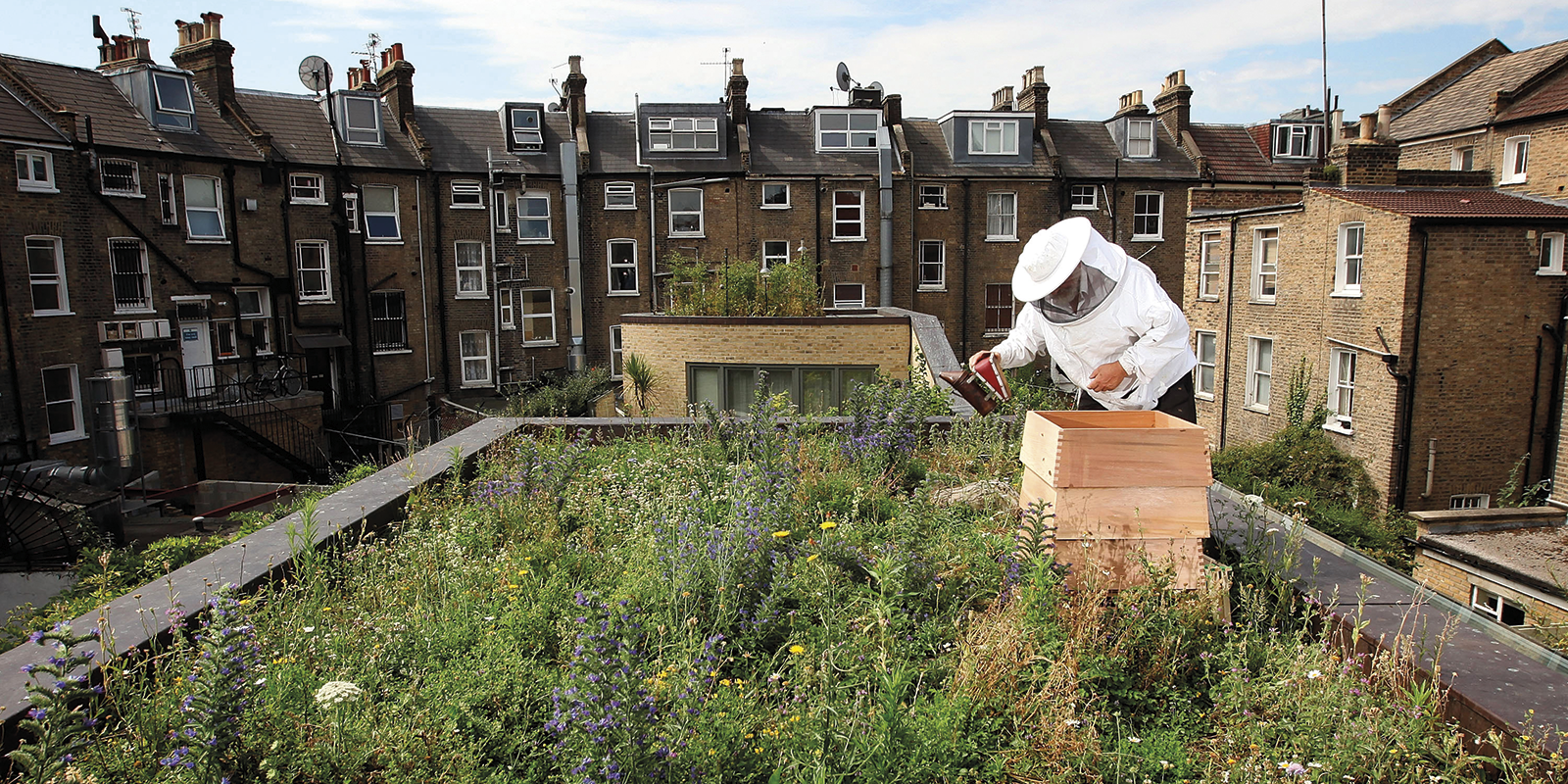
Principle 5: net environment gain for long-term environmental recovery
“Construction in the UK accounts for 60% of the country’s total waste, so focusing on waste reduction and the use of more advanced technologies to reduce the amount of waste generated through construction can support long-term environmental gains.”
“Reuse and reclaim existing building stock and protect biodiversity for net positive benefits in energy, water, biodiversity, materials, and working toward circular economy principles.”
“There is a need to fully appreciate risk and focus on performance-based outcomes. Billions in public money may be spent on the wrong risks unless solutions are properly engineered to be proportionate.”
Principle 6: create collective capabilities regarding robustness, rapidity, resourcefulness and redundancy
“Avoid creating restrictions in legislation relating to use. We’ve become rigid in our views of how assets can and should be used, and we make it very difficult to flex and respond to demand. This is a government, top-level issue, so particular sectors can become very focused and fixed on their own rules without thinking about the big picture. Remove barriers between sectors – including government, local government departments and professional institutions – and improve collaboration and data sharing.”
“There is a spatial data sharing issue, both between buildings in neighbourhoods and scaling that up, and similarly with data and with different stakeholders over time. A significant amount (60%) of building stock will still be in use in 25 years, and the knowledge and expertise that assisted in its construction may not be digitalised. Getting the knowledge from people who are really not digital at all and translating it into a digital format won’t be easy. Digital natives may get excited about digitisation, but there a fundamental challenge in that there’s 15-20 years of experience where people are really not digital.”
Principle 7: leveraging physical resources for collective responsibilities
“Multi-dwelling buildings and sharing between buildings create opportunities. In energy, there are increasing opportunities for sharing, where different buildings have varied heating and cooling demands. Creating communal systems and services rather than single-property connections tends to be cheaper and more resilient.”
“In the event of a disaster or net loss of supply, there is an opportunity to optimise supply. For example, after the Fukushima nuclear accident Japan managed a net loss of 30% of its generating capacity by installing load-sharing connectivity in all commercial buildings. It is something you can only do in countries like Japan, where everyone allows you to just go in and install things in their building.”
“The degree of resilience should be thought of in terms of proportionality to what you are trying to protect and what you are trying to be resilient to. The US has four categories of building resilience: basic/domestic, blocks of flats and large buildings, through infrastructure, and nuclear defence. Each has its own level of protection.”
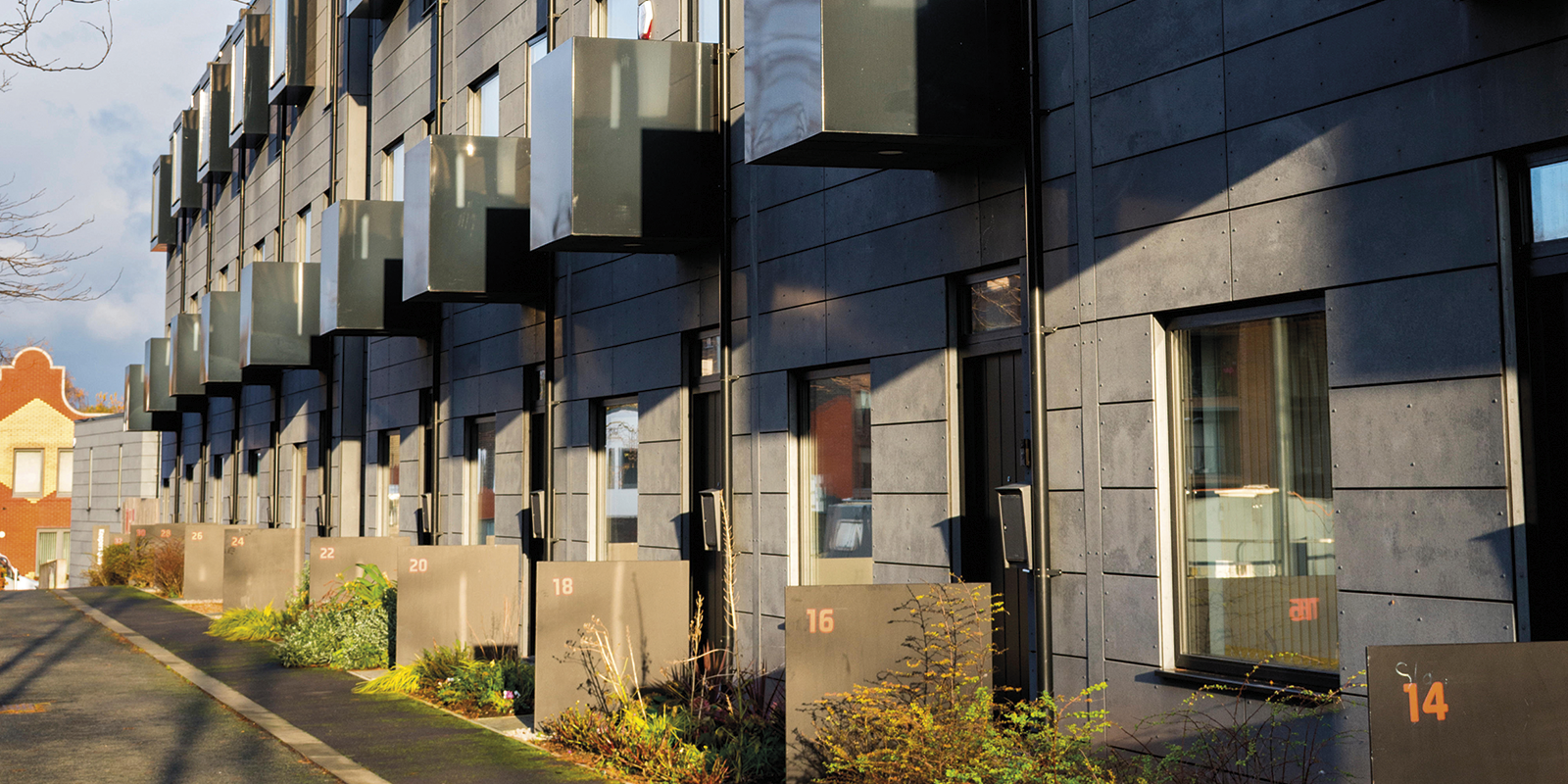
Principle 8: flexibility to adapt to future needs
“Design buildings to accommodate upgrades and extensions without increasing their footprint and without compromising sustainability. We should not over design, but design for sufficiency and build in flexibility. This affects the traditional training of construction professionals.”
“Modular designs are easier to deconstruct at end of life and we can reuse the high-value parts again. But modular design requires specialist repair, and ordinary people cannot repair a modular building like they can a bricks and mortar building. Nevertheless, modular design may help overcome the loss of trades – although for bespoke needs, it may not work.”
“Flood prevention measures for new buildings, accommodating for rises in sea levels, are needed.”
Principle 9: graceful extensibility beyond system boundaries
“Influence beyond the building envelope will be needed in future to assure resilience. The way we are currently organised doesn’t take long-term survivability and extreme scenarios into account. At the moment, we’ve generally optimised for cost, then quality. You’re talking about all sorts of other drivers, like carbon or resilience. Choosing the best option to optimise all these priorities is going to be more important than going with the least costly option.”
“As we add more renewables onto our buildings, we can share generative capacity to optimise those things. They are areas where you could see there could be real payback on investors in sharing. In this country, heat is our big carbon problem for buildings. We can deal with electricity demand – heat is the big issue.”
“This seems to be about systems thinking – how do you think through the unintended consequences and make that a disciplined part of any changes that are made? We don’t build as a collective; it’s individual plots of land that are built on for the purpose of individual clients or the economic output that’s wanted. Of all the principles we’ve looked so far, this is the one where the building industry completely falls flat.”
Principle 10: redundancy in system safety to raise baseline safety
“There may be a rebound effect of raising baseline safety measures. For example, flood walls may stop water ingress, but if exceeded could result in flows that pose a hazard to life. Consider prioritising passive, low-tech safety measures over complex active systems. We should create a hierarchy where passive measures are prioritised over active ones. This is because we don’t have the maintenance capacity to deal with increasing levels of sophistication over time, and that creates its own risks.”
“We have a safety net in that some sites are just not suitable for development. As a society we need to get more comfortable with risk acceptance. But we don’t have the capacity to deal with system safety issues over time.”
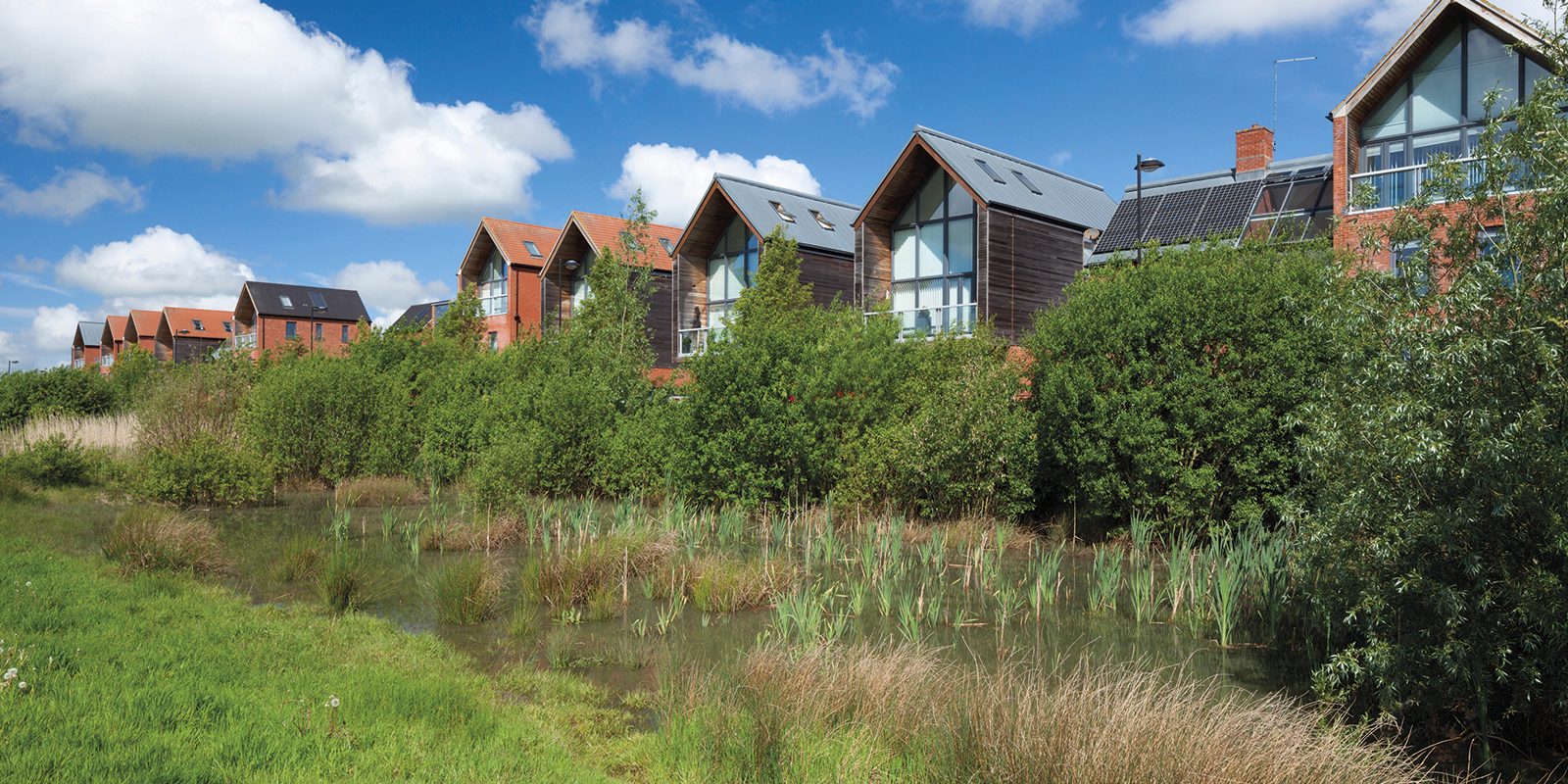
Principle 11: assurance of data safety for stakeholder trust
“There is a discussion about the golden thread around building information, which is about retaining data by having a continuing handover of information across the life cycle that enables people to make the right decisions to get the right outcomes. It is about the currency of data, not just how someone else repaired it last time – we should be looking at preventing the situation occurring in the first place. If we want resilient infrastructure, we should be prepared and look at what is coming, not what has been and then changing something to suit what’s past.”
“For most buildings, the data starts with building information modelling (BIM), but we need that to be used for retrofit, maintenance and so on, and end of life. It goes beyond that, though – you need to record the strategies that underpin the original decisions and how those are modified through time: a decision audit trail. There is a big debate around who should have access to that information. How much do you make available and how much you should be obliged to make available? One of the key challenges is the litigious nature of our sector and the barrier this creates in sharing with stakeholders.”
“How and where data is stored is important, because in a disaster situation having access to that data when infrastructure has been wiped out is a challenge. There’s going to be a key data set that needs to be accessible to the emergency services.”

Principle 12: timely knowledge for mitigating uncertainties
“How and where data is stored matters in how that interacts with a digital model to get useful intelligence when something has happened and thereby provide insight into what it means, despite there being a multitude of variables. Building a model around the data allows you to create scenarios and make intelligent, informed decisions rapidly.”
“For building energy management systems (BEMS), one of the challenges concerns learning systems and effective decision-making. Most BEMS will have some sensing capability, and most clients don’t ask how to get better information out of their systems. There is a big piece here about training, knowledge about digitisation and systems, and turning that into a practical reality. There is an inherent capability in most BEMS that is just not used because it’s not understood. More technology is not necessarily the answer. Some technology is the answer, and getting much better at using what we’ve already got is a key challenge here. Something as simple as a handwritten maintenance diary is a start, as not every person is digitally aware.”
“Education (including at school level) and public awareness about what to expect, and how to increase preparedness at personal level, are vital.”
Principle 13: systemic learning for effective decision-making
“Low-cost indoor environmental monitoring technologies can prevent disasters. AI technology providing data on a building’s condition is directly replicable and being used more and more. Augmented reality is also really useful to improve decision-making, particularly maintenance and refurbishment work.”
“As we move toward BIM and recording data and information, it leads on to using virtual reality and resolving problems before they arise. Bodycams are also good as a lessons learnt tool.”
“Analytics are key, but everyone wants to glean data from a software as a service business model and then sell it. Analytics for the public good need to be considered.”
Principle 14: appropriate intervention for rapid response
“Technology that enables vulnerable people to be located, in a fire or a building collapse, or even in a context such as prioritising support for people during a heatwave, will support recovery. Footfall counters linked to phone data etc may also help.”
“It is all about planning. Technological intervention and increased data don’t necessarily allow you to make decisions rapidly. You have to pre-empt the challenges you’re going to face in order to have a plan in place, otherwise it is going to be too late. It means training and practice, and knowing who your stakeholders are, as well as regular checking and maintenance of all alarm systems.”
General feedback
“The market is not yet buying climate change, although many risk professionals want to offer the service. We can write fire, security and holistic resilient design strategies that integrate seamlessly, but no one is buying that. The industry is crying out for convergent solutions, and we have the technology and know-how. But without market buy-in, they are doing what they have always done – and getting what they always got.”
“The disaggregated nature of the UK construction industry means that supply chains don’t work effectively for the whole life of a building. An example is a residential block built under the code for sustainable homes that should be energy efficient. There’s a solar array on the roof, but it isn’t operating due to a leak in the basement caused by a utility company damaging a steel pile. Each supplier acts to strengthen the economic capacity of their particular trade or part of the process, but has removed the resilience of the infrastructure for the building’s lifetime.”
CABE member responses, alongside other industry experts, have helped further refine the principles; these 14 principles have now been consolidated into six. As concern grows that disruptions are becoming more frequent and more severe, it’s encouraging there’s now a huge body of work looking at how we can all become more resilient.
For more details, visit
- bit.ly/UNDRRdata
- bit.ly/UNDRRresilience
- bit.ly/UNDRRrecommends
- bit.ly/UNDRRResiliencePanel
- bit.ly/ResilientInfra


